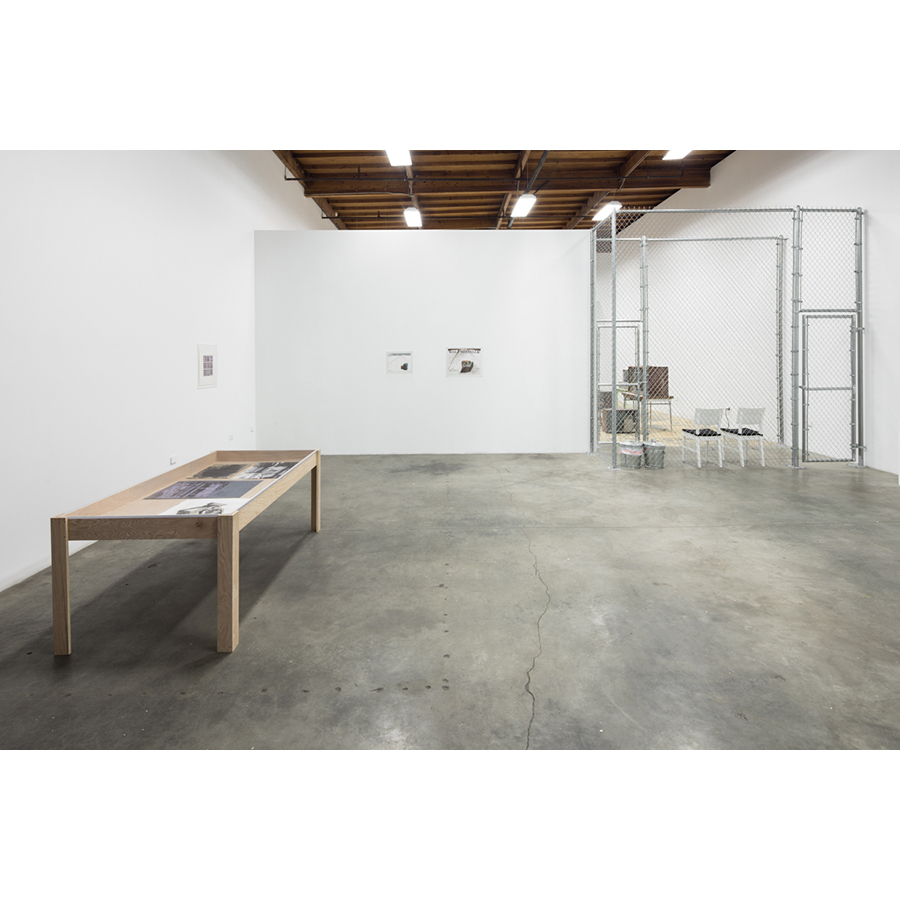
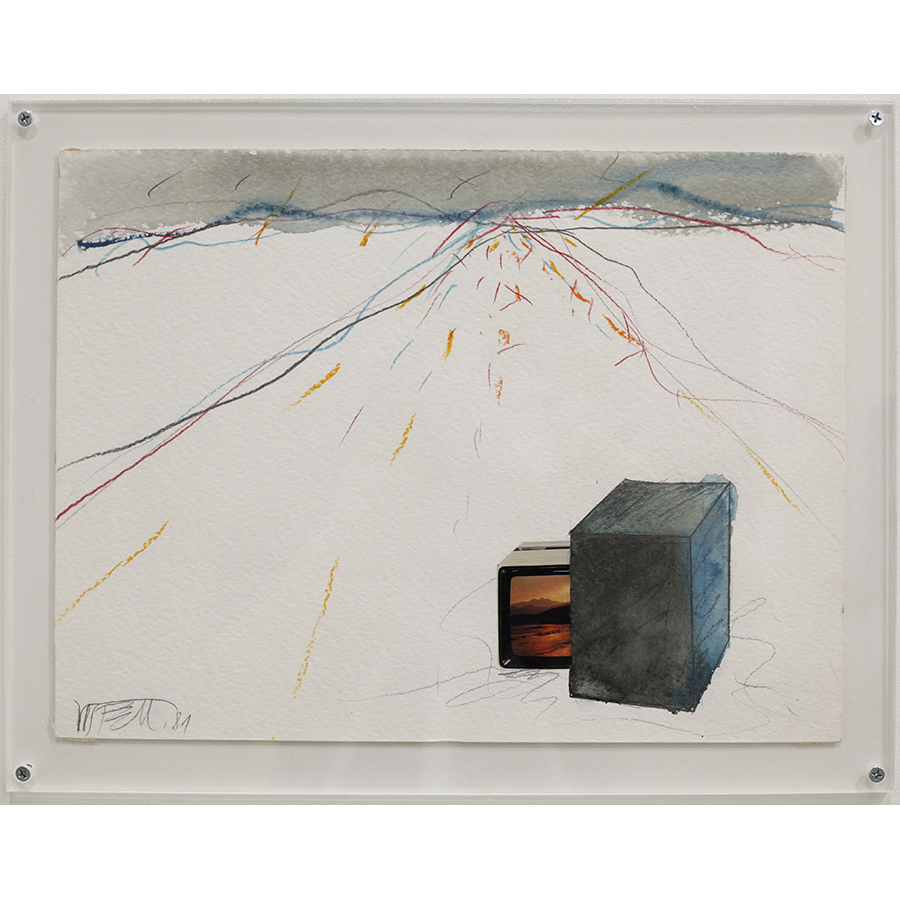
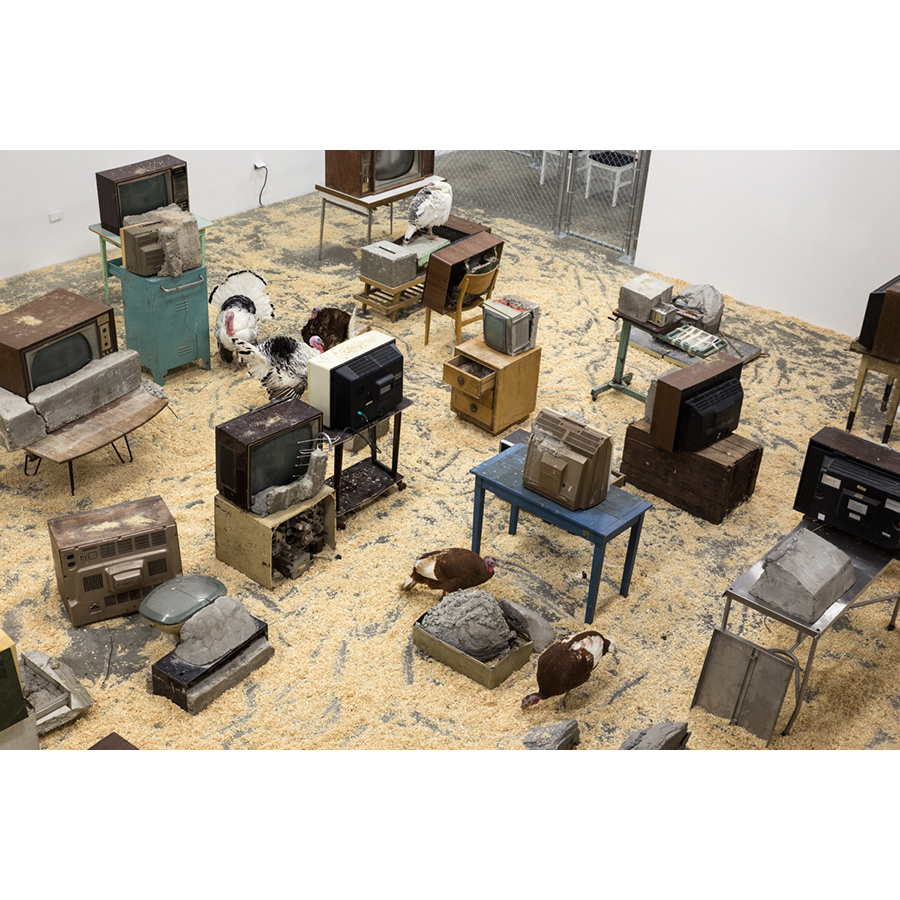
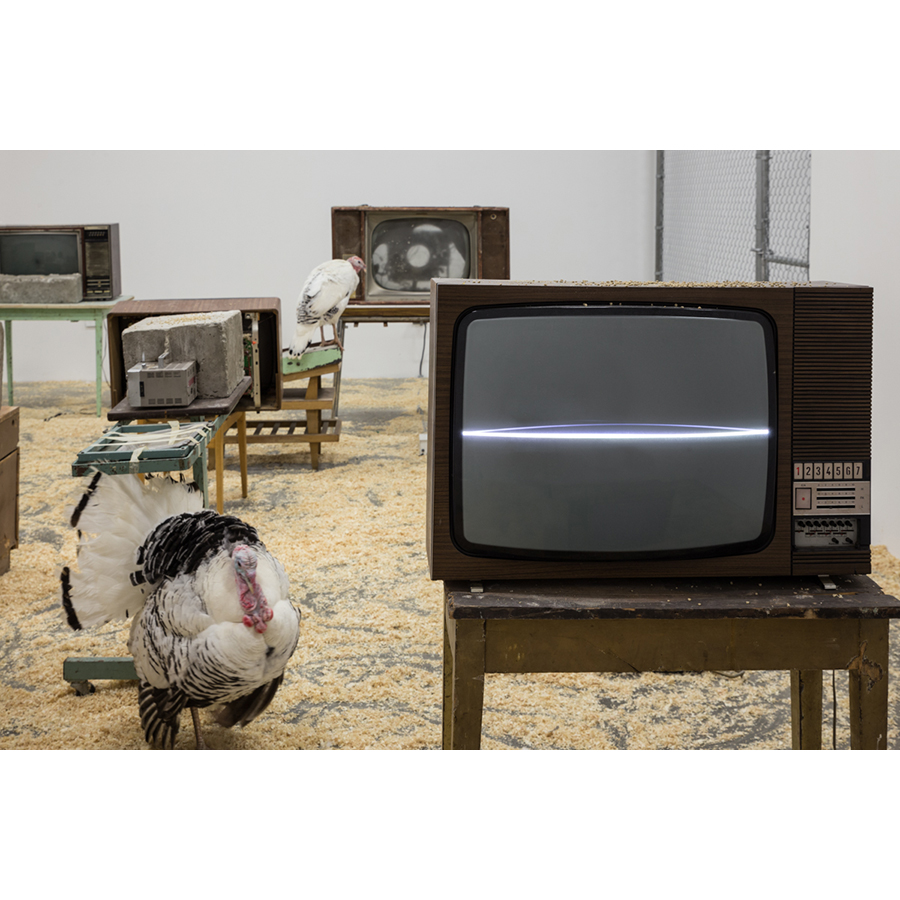
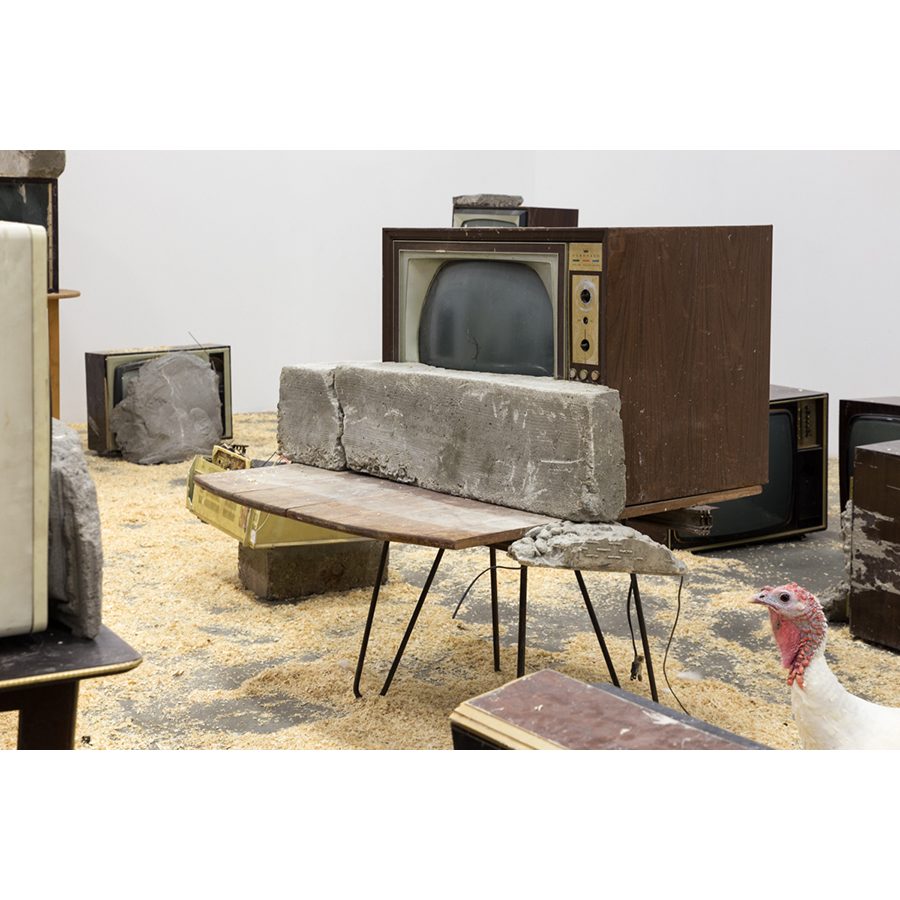
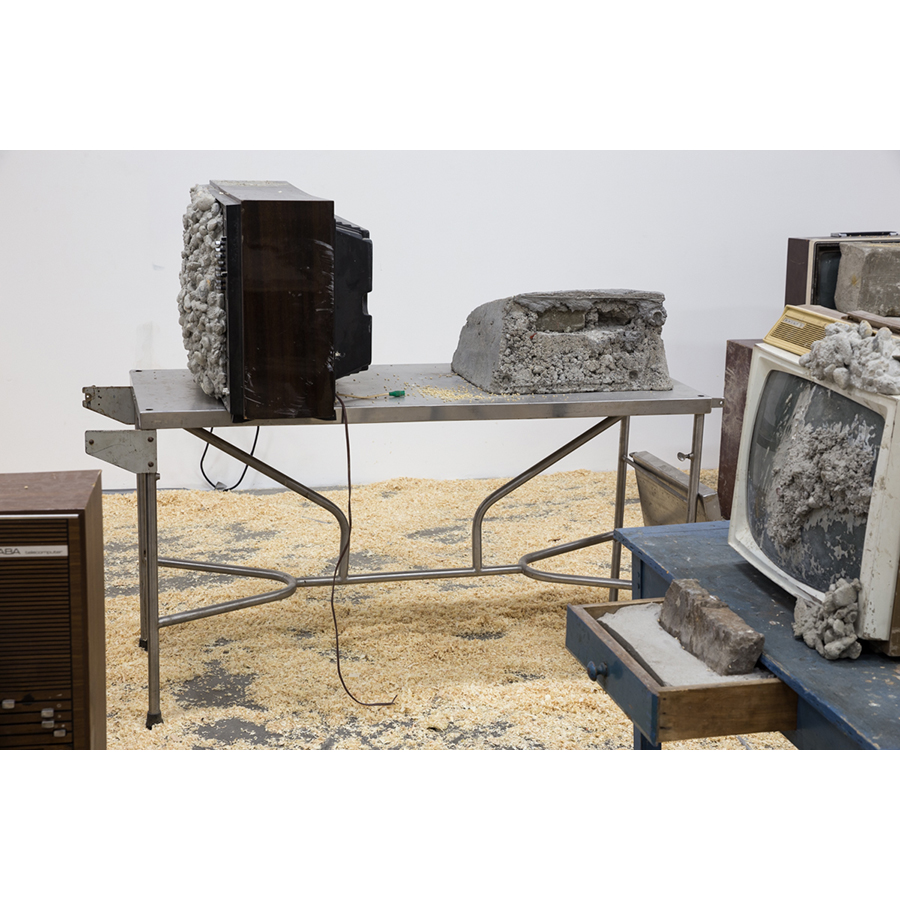
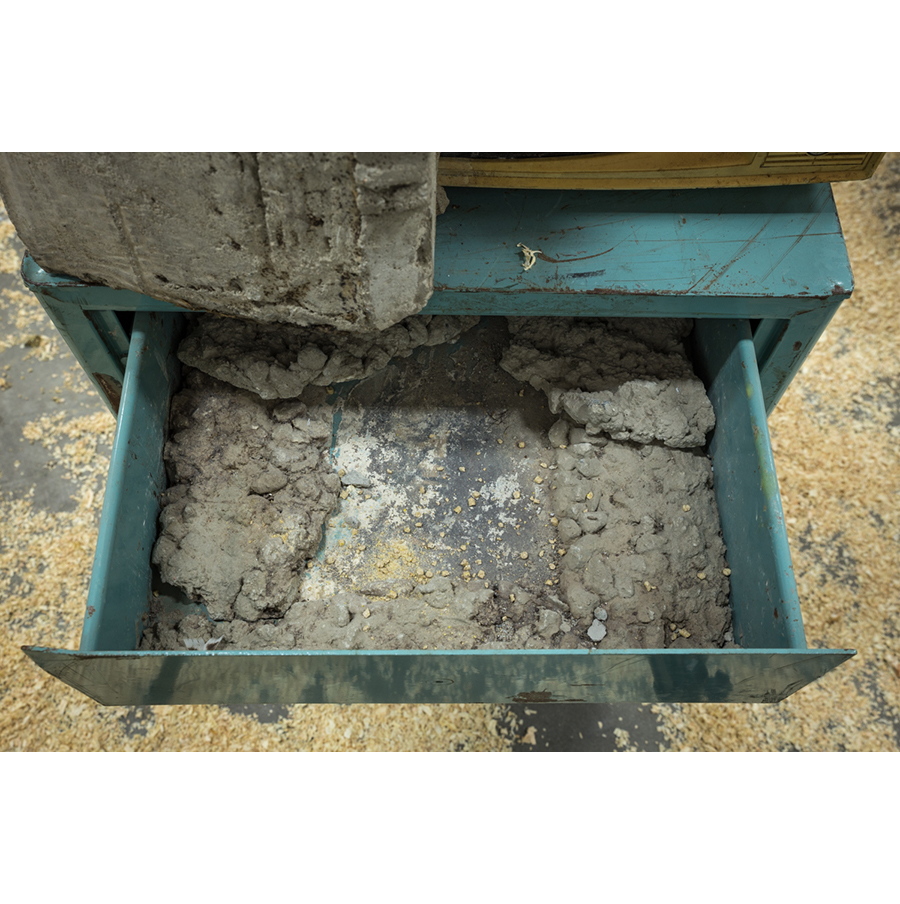
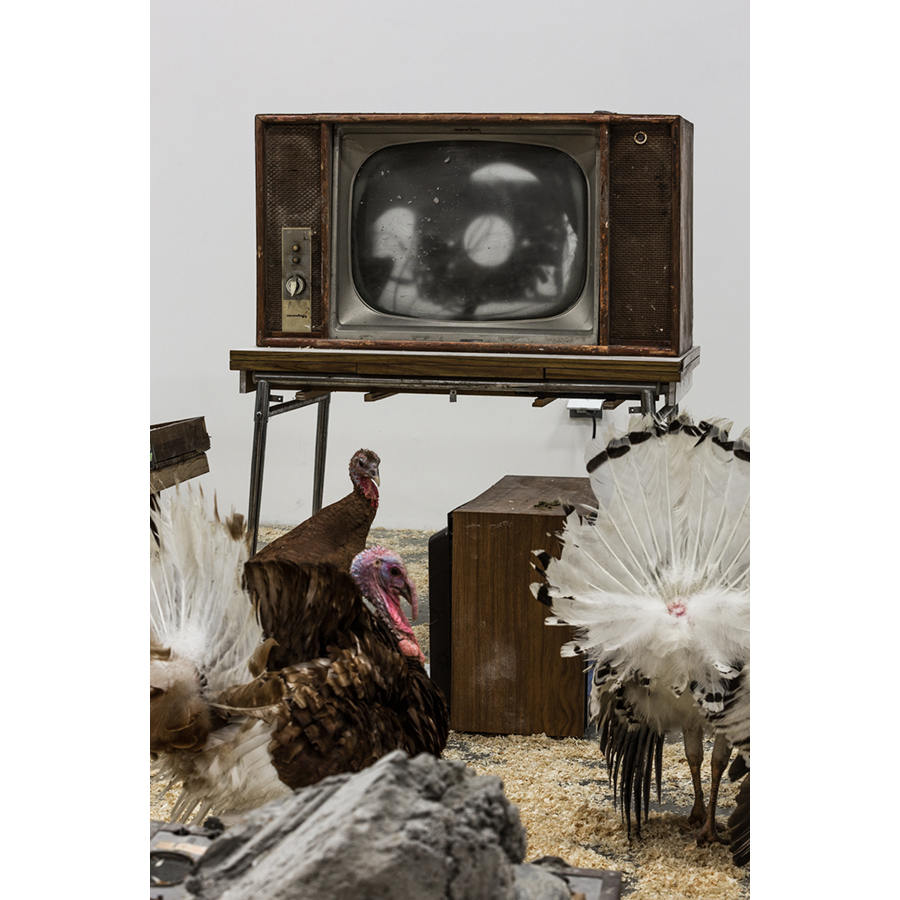
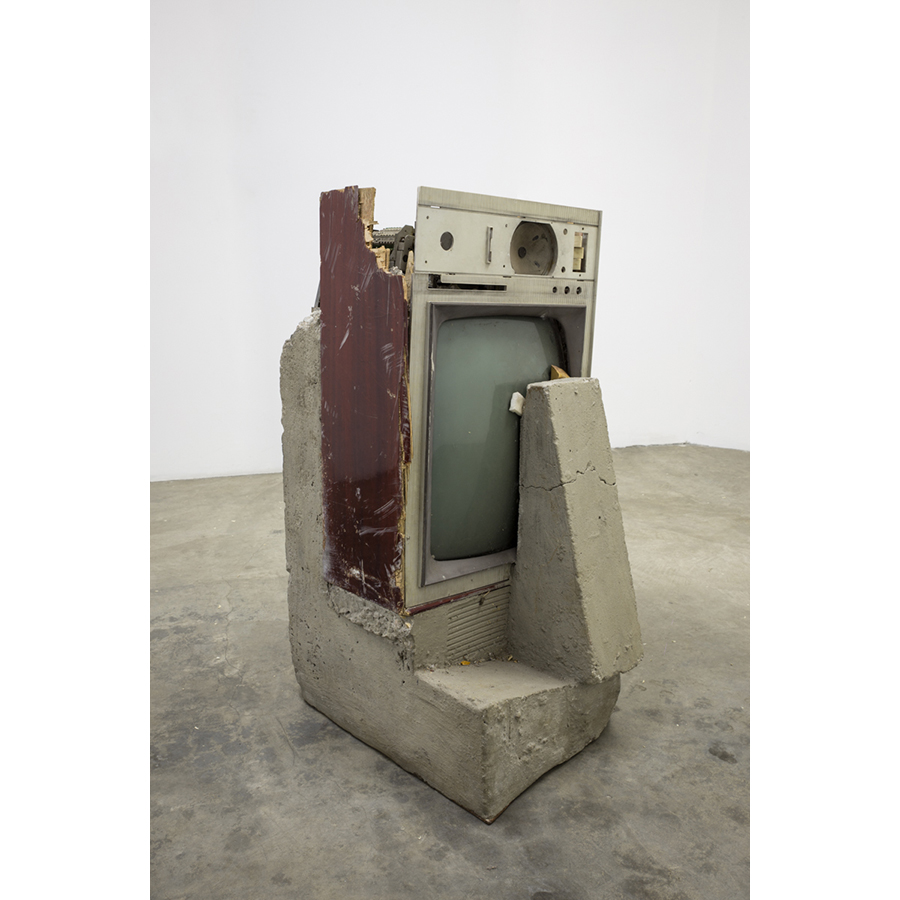
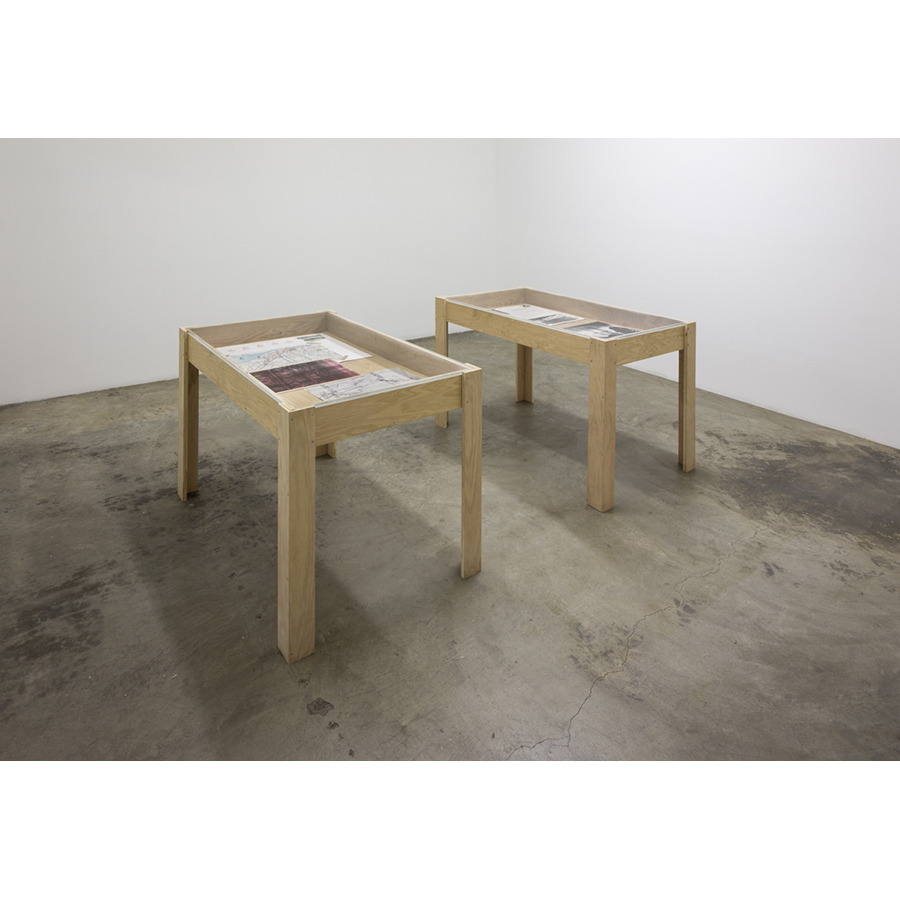
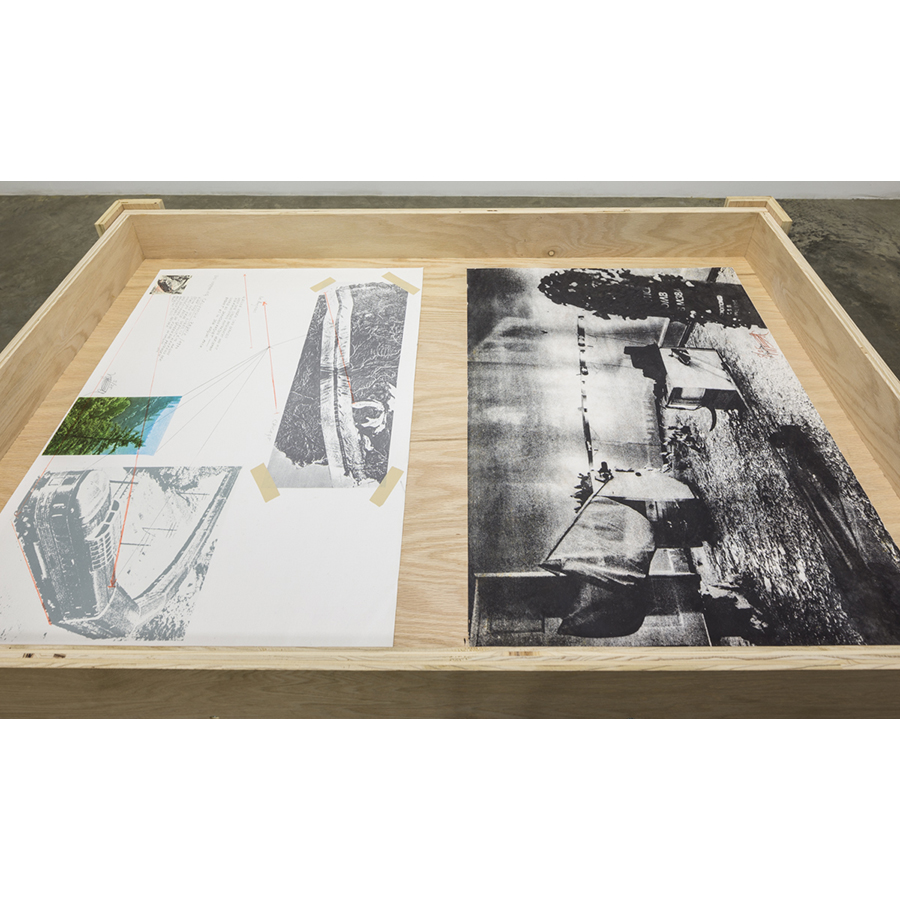
*Extra gallery hours will be added for this exhibition. The Box will be open Wednesday-Sunday from noon-6pm.
FOR IMMEDIATE RELEASE
Wolf Vostell
Endogen Depression/Back in LA
November 24 – January 5, 2015
We are exuberantly proud to announce our upcoming exhibition by Wolf Vostell (1932-1998) Endogen Depression/Back in LA. This exhibition will bring the original installation of this work that was created for the Los Angeles Institute of Contemporary Art (LAICA) on Robertson Blvd., in 1980. While this work has been shown in Europe in various formations since then, LAICA has been the only American institution that has exhibited this work, until now. We are excited to bring this work back to Los Angeles after thirty years.
There have been approximately nine versions of Endogen Depression, a work that Vostell started in 1975at the Hannover Art Museum, Germany. This installation consists of approximately forty objects; including tables, dressers and tube televisions that together bring up references of a traditional domestic home. All the televisions are half embedded in concrete and about ten of them will be turned on. In the original installation at LAICA, all of the televisions were turned on with the sound turned very low. And while many of the earlier versions (pre 1980) included a group of dogs, the version installed at LAICA included a group of live turkeys that were left to wander about the space. The installation of Endogen Depression at The Box will also include six live turkeys. The turkeys bring up references to classic American themes, especially in relationship to the purely American holiday, Thanksgiving.
Vostell, who is known as the first artist to integrate a television set into a work of art, was based in Berlin, Germany and Malpartida, Spain but also spent time in America (California, New York and Illinois). He was deeply involved in the Happenings and Fluxus movements of the 1960s, working in close proximity to Allan Kaprow, Alison Knowles, George Maciunas, Dick Higgins and Nam June Paik. Vostell was also a part of the NO! Movement of New York, NY. The Box recently installed an exhibition The Three Prophets highlighting the three founding members: Lurie, Goodman and Fisher. Both Fluxus and the NO! Movement have roots in the anti-commercialization of art which is seen in Vostell’s Happenings and Environments, which value the experience of the work over the monetary value of the work.
Here is an amazing quote from Kaprow’s essay Nontheatrical Performance (1976) which outlines Vostell’s interests: “Although Vostell was a participant too, he viewed his piece as a consciousness-raising device, as teaching, as behavior changing.” While this particular quote is in reference to a Vostell Happening: Berlin Fever (1973), I believe it helps us to understand the complexity of Endogen Depression. There are many layers in this work: the envelopment of televisions in concrete to reduce their value; turkeys roaming the space interacting with the objects, the sounds, the people; the convoluted layout of the space, full of furniture that must be woven through. This piece creates an experience like no other. The surreal qualities interconnect with our everyday experiences encouraging us to consider how everything comes together in our minds.
Vostell has been included in Paul Schimmel's Destroy the Picture: Painting the Void, 1949-1962 (2012) as well as Out of Actions: Between Performance and the Object 1949-1979 (1998). He was also part of Documenta 6 in 1978. In 1976 Vostell established the Mueso Vostell Malpartida de Cáceres, Spain. He is also well known for his Concrete Traffic (1970) in Chicago, Illinois, which is a Cadillac completely encased in concrete. A few notable retrospectives: Retrospective: Musee d’Art Moderne de la Ville de Paris, France and Nationalgalerie, Berlin, Germany (1974/1975) and Wolf Vostell: My art is the Eternal Resistance to Death: Rheinisches Landesmuseum, Bonn, Germany (2007) and Carre d’ Art-Musee d’ Art Contemporain de Nimes, France (2008).
The turkeys that will be part of this exhibition will only be in the installation for opening hours. They will have a separate living area with outdoor space and cozy coups. We have hired someone with veterinary and farm experience whose sole responsibility will be to care for the health of these turkeys. Post exhibition these turkeys will go to a farm sanctuary to live.
If you have any questions please contact:
Mara McCarthy, Principal/Curator of The Box at info@theboxla.com / 213 625 1747